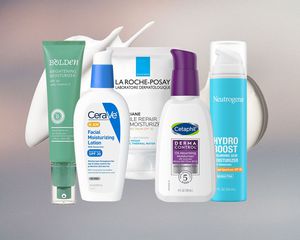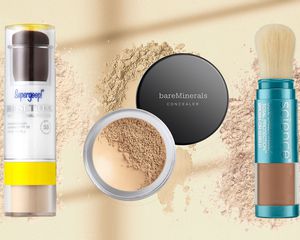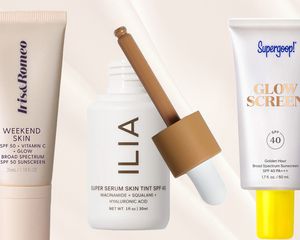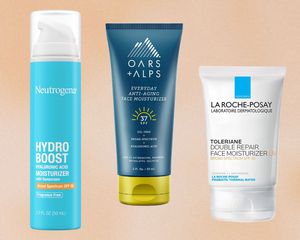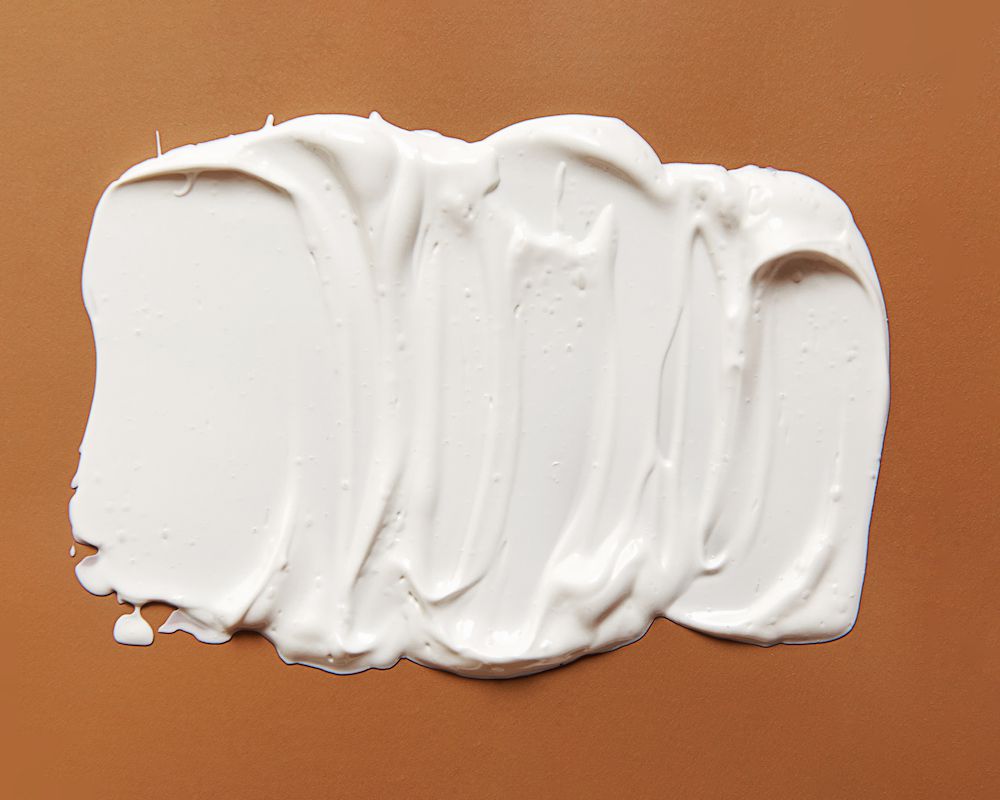
Getty
Octocrylene may sound otherworldly, but it's a skincare ingredient that you may unknowingly be using daily—if you are applying sunscreen every day, which we highly recommend. It's a chemical sunscreen ingredient, used not only for its own ability to protect skin from both UVA and UVB rays but also for its ability to increase further the stability and efficacy of other chemical sunscreen ingredients, hence its popularity and prevalence. Ahead, dermatologists explain exactly how this ingredient works—and also weigh in on the controversy surrounding it.
Meet the Expert
- Ted Lain, MD, is a board-certified dermatologist and chief medical officer of Sanova Dermatology.
- Marie Hayag, MD, is a board-certified dermatologist and founder of 5th Avenue Aesthetics.
- Ron Robinson is a cosmetic chemist and founder of BeautyStat Cosmetics.
Keep reading for more information on octocrylene.
Octocrylene
Type of Ingredient: Chemical sunscreen
Main Benefits: Protects against UV rays as well as stabilizes other chemical sunscreen ingredients.
Who Should Use It: Anyone looking for an effective chemical sunscreen formula.
How Often Can You Use It: Daily, though, it should also be reapplied every two hours, particularly if you're swimming or sweating, says Lain.
Works Well With: Other chemical sunscreen ingredients, particularly avobenzone.
Don't Use With: According to the experts we spoke with, there are no ingredients known to interact with octocrylene negatively.
What Is Octocrylene?
"Octocrylene is a chemical sunscreen ingredient that, once absorbed into the skin, captures harmful UV rays before they can cause damage to the underlying skin cells," explains Lain. Sunscreens are generally split up into two categories. Physical formulas rely on minerals such as zinc oxide and titanium dioxide and work by sitting on top of the skin and deflecting rays. The other category relies on chemicals (octocrylene being just one of several) that work once they're absorbed into the skin.
Benefits of Octocrylene for Skin
- Protects against UVA rays: Octocrylene offers protection against UVA rays, those responsible for signs of aging.
- Also protects against UVB rays: While certain chemical sunscreen actives only guard against one type of UV ray, octocrylene protects against UVA and shorter UVB rays (those responsible for burning), says Robinson.
- Works synergistically with other skin-protecting ingredients: Octocrylene is FDA-approved in concentrations of up to 10 percent; on its own, this doesn't offer adequate protection, so it's always combined with other chemical sunscreen ingredients, all of which have their own percentage cap, he says.
- Helps prevent skin cancer: As noted above, it absorbs UVB rays, and shorter UVA rays, which are responsible for skin cancer.
- Stabilizes chemical sunscreen ingredients: Octocrylene is unique among its counterparts in its ability to ensure the stability and efficacy of other chemical sunscreen ingredients, avobenzone in particular. "Octocrylene is quite photostable, losing only about 10 percent of its SPF protection after 95 minutes," says Hayag. "It doesn't break down or change its molecular structure in the presence of UV light, as some other sunscreen ingredients do." (Plainly, the last thing you want is a sunscreen ingredient that's going to become inactivated and stop working when exposed to the sun). This is in stark contrast to avobenzone, a broad UVA blocker that breaks down within 30 minutes of sun exposure, points out Lain, noting that this is why you'll often see the two combined.
- Increases the water-resistance of a sunscreen: Octocrylene can also help improve the water-resistance of a sunscreen, adds Hayag.
- Helps combat signs of aging: As it protects the skin from the elements, octocrylene helps preserve the skin against wrinkles and sunspots caused by the sun.
- Protects against skin damage: Thanks to UVA protection, octocrylene protects the skin against sun damage.
Side Effects of Octocrylene
According to Hayag, octocrylene doesn't pose any substantial side effects to most people, though she does add that some studies have shown that children are more prone to having an allergy to the ingredient. As such, she suggests children and anyone with sensitive skin or issues such as rosacea or eczema avoid the ingredient, as should anyone who is breastfeeding (it can be found in breast milk).
Additionally, the biggest potential issue is the recent public concern about the safety of chemical sunscreens in general; many, including this one, have come under fire through studies that show that trace amounts might get into the bloodstream, explains Robinson. While this does sound concerning, it doesn't necessarily mean that they're unsafe, just that further research is needed. "The short answer is that, based on all the available data provided, the amount found in the bloodstream will not cause problems," says Lain. Not to mention that we know that not wearing sunscreen will lead to skin cancer. That being said, if you're stressed about it, pass on this and other chemical sunscreens, which the FDA is still investigating, and stick with mineral options that include zinc oxide and titanium dioxide. These are the two sunscreen ingredients the FDA has deemed GRASE—"generally recognized as safe and effective".
How to Use It
Regardless of what active ingredients your sunscreen contains—octocrylene or otherwise—the same rules apply. The first step in proper usage is to actually use it. Ideally, you want about a third to a half of a teaspoon to cover your entire face and neck adequately. The expert recommendation is to reapply every two hours for the best protection. If you can't reapply every day, at the very least, make sure you're diligent about reapplication any time you're going to be outdoors for a prolonged period.
Arguably the easiest way to ensure you never forget to wear sunscreen daily is to use a moisturizer with SPF built-in. Robinson is partial to this one, which is a good anti-aging option not only because it has that sun protection; it also contains peptides to help visibly reduce wrinkles, he says. Multi-tasking for the win.
This formula combines both chemical sunscreens—octocrylene and octisalate—along with mineral-based titanium dioxide. Those offer the necessary broad-spectrum protection, though this also has the added benefit of the brand's oyster mushroom complex to minimize damage from other environmental factors (think: pollution and temperature changes). Hayag is a fan, particularly of the featherweight texture. Plus, it has a gorgeous finish that's slightly dewy but never greasy.
Generally speaking, some mineral sunscreens tend to leave a white cast, particularly noticeable on darker skin tones. That's where a chemical product can be a great option; enter this brand, a team Byrdie fave, which set out to address that issue specifically. Their SPF 30 daily sunscreen boasts a blend of chemical sunscreen ingredients (octocrylene included), is super moisturizing (thanks to the addition of jojoba and avocado oils), and dries completely clear.
According to Robinson, this checks all the sunscreen boxes: great protection, fast-absorbing, and a velvety finish. Fun fact: It also consistently gets top rankings in the annual Consumer Reports sunscreen guide. It's non-comedogenic and tested on sensitive skin, too, and touts antioxidants for even extra protection on top of the broad-spectrum SPF 60.
While the chemical sunscreen actives in this formula aren't organic, a large part of this formula (70 percent, to be exact) is. Robinson lauds it for being packed with antioxidants and lightweight (making it particularly nice for beneath makeup).
Dealing with a perpetually slick complexion? Robinson says to try this "lightweight, oil-free, oil-controlling sunscreen for oily skin types." Indeed, it will make those who say sunscreen leaves them extra-greasy think twice; it contains an oil-absorbing powder, a speedy dry down with a matte finish, and won't clog pores.
The Final Takeaway
Octocrylene is a common ingredient found in chemical sunscreens, and the FDA has deemed the ingredient as safe in concentrations up to 10 percent. However, f the recent controversy surrounding chemical sunscreens makes you nervous, you have other options. Opt for a mineral SPF instead (a mineral sunscreen contains titanium dioxide or zinc oxide as the main active ingredient). Whatever you do, don't just stop wearing sunscreen.
